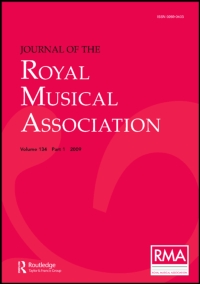No CrossRef data available.
Article contents
The Characteristic Traits of Irish Music
Published online by Cambridge University Press: 01 January 2020
Extract
In studying the characteristics of a people's native music, some preliminary considerations necessarily claim our attention. First, it is of interest to ascertain by what means or through what channels the particular music in question came to be known and practised as an art of sufficiently distinctive qualifications as to claim comparison with the music of other countries; secondly, we like to inquire, especially with the aid of such literature on the subject that may be extant, what are the internal and external evidences that exist with regard to the power and influence of that music; and then alone can we turn to an analysis of the music itself, noting its peculiar forms of structure—accounting for same when possible—and contrasting the artistic and emotional effects obtained with those general musical traits with which we are already familiar.
- Type
- Research Article
- Information
- Copyright
- Copyright © Royal Musical Association, 1896
References
∗ O'Curry's translation of the Battle of Magh Tuireadh (Harleian MSS., 5280, Brit. Mus, f59, a last line).Google Scholar
∗ From “Book of Conquests” (quoted by O'Curry in “Manners and Customs of the Ancient Irish “)Google Scholar
∗ V. Galilei. “Dissertazione della Musica antiqua e moderna” (Fierenze, 1581.)Google Scholar
∗ “Lowered Seventh” restored.Google Scholar
† Reiteration.Google Scholar
∗ To show the indispensability of the ceis to the cruit. reference might be made to an ancient Irish poem which compares “a Harp without a ceis” to “a Company without a chief.” (O'Conor Don MSS., R.I.A., p. 917.)Google Scholar
† For another opinion and full treatment of the subject, see O'Curry's “Manners and Customs of the Ancient Irish,” Vol. III., pp 243–256.Google Scholar


